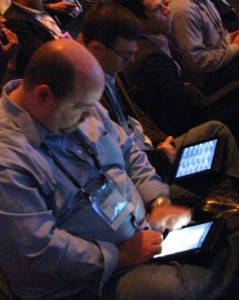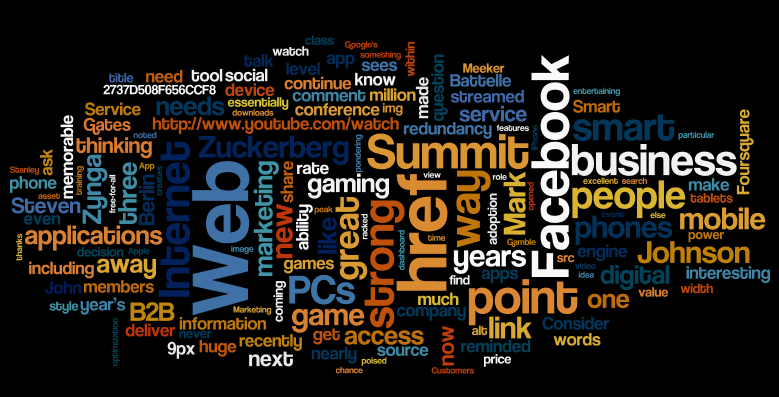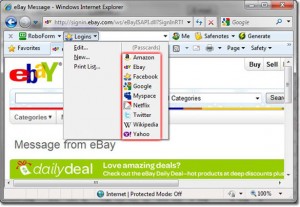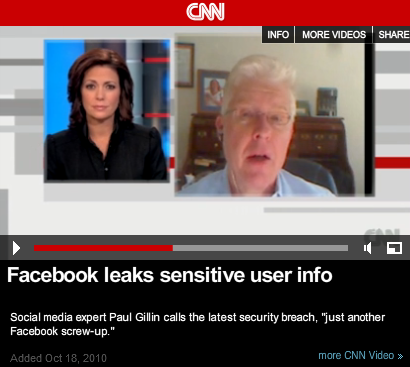The End of ‘Social Media’

It’s not that social media is no longer important. On the contrary, there’s almost no media today that isn’t social. The problem with much of the discussion is that it’s been focused on tools, and tools are far less important than what people do with them. Now that everyone knows the basics of Facebook and Twitter, things start to get interesting.
January 1 marks the beginning of a new decade, and it’s worth reminding ourselves of how much changed in the decade just completed. Ten years ago, almost no one had heard of Google, there was no online video and consumer ratings were unknown. We used cell phones primarily for voice calls and content management systems less functional than WordPress cost a half million dollars.
In early 2004 Technorati counted about a million blogs on the Internet and Facebook was just getting off the ground. Seven years, 200 million blogs, nearly 600 million Facebook members and a few billion YouTube videos later the information landscape has been completely transformed. Stunning.
We have achieved a goal Bill Gates coined 20 years ago called “information at your fingertips.” Want to know who said “There’s a sucker born every minute?” Tap, tap, click and you’re there (it wasn’t P.T. Barnum, BTW). Interested in the film history of the movie star you’re watching? IMDB has an app for that.
This new reality of instant information access will transform our economy and our culture fundamentally. It’s already beginning. A friend who runs an auto dealership tells me that customers today typically know more about the cars they want to buy than his own salespeople do. Some now come into the showroom knowing precisely what other people have paid for cars at his dealership within the last couple of months. Think of how that changes his business. And what’s happening in auto sales will happen in every single industry.
Over the next few years we will learn to take for granted that advice from people just like us is available whenever we need it, and the tools to deliver this information will get much better. This will change the way we make decisions, and that will change nearly everything else*. Companies that don’t provide significant value will struggle to survive. Weak products will disappear quickly from the market and advertising won’t be able to save them. Our range of options for buying and selling products and services will expand by orders of magnitude thanks to global connectivity.
Businesses will need to empower all their employees with much more information and education because customer will no longer tolerate “I’ll have to speak to my supervisor.” Organizations will flatten and fragment because vertical hierarchies move too slowly. Corporations will divest non-strategic businesses because slimmer profit margins won’t support them.
In short, we’re all going to become a lot more efficient at doing what we do. This will cause a lot of pain in the short term; one of the reasons we’re in a “jobless recovery” right now is that businesses are learning to do more with less. In the end, these changes will be no less dramatic than those brought about by the Industrial Revolution; only this revolution will take a couple of decades instead of a couple of centuries to complete.
Much of this change will be brought about by a few elegantly simple tools: Ethernet, the Internet Protocol, hypertext, RSS, HTML and a handful of others. See what happens when people apply innovation to the tools they use?
Social media is rapidly ending ignorance, at least in the developed world. Over the 10 years, this new reality will reshape our lives. It’s going to be an exciting ride, and I hope I get the opportunity to stick around for it. Have a great holiday and I’ll talk to you on the other side!
*Books I read this year that do an exceptional job of sketching out the post-social media world include The Hyper-Social Organization by Francois Gossieaux and Ed Moran, Open Leadership by Charlene Li and Do It Wrong Quickly by Mike Moran. The best book I’ve ever read on media transformation is The Chaos Scenario by Bob Garfield. It’s also funny as hell.
Twitter Questions Answered
Should you use a company logo or a personal photo as your Twitter picture?
Should personal Twitter accounts be used for company business?
Is there a different mix of tweets for a B2B versus a B2C audience?
Good questions! And in my most recent contribution to BtoB magazine, I take a shot at answering them. These are some of the 15 questions that we weren’t able to address in an hour-long webcast called “The Secrets of B2B Twitter Success” that I did earlier this month with Avaya’s Paul Dunay and CME Group’s Allan Schoenberg. You can view that webcast on-demand here, as well as the rest of BtoB‘s Digital Edge virtual conference.
Paul, Allan and I have also cooked up an interesting way to address the questions as a group. I’ll point you to those results next issue.
Tip of the Week: Google Forms
A little-known but wonderful feature of Google Documents is its forms capability. You can build reasonably functional surveys like this one and capture results in a spreadsheet. There are lots of ways to use this feature. Whenever I present a speech or training class, I send a short form to the organizers asking for feedback. You can also use forms to collect leads or build subscriber lists. They’re also easily embeddable in Web pages. Google makes the process of creating them simple. Here’s a nice introduction to forms.
Just for Fun: Truly Terrible Driving
It’s unfortunate that this hilarious YouTube video is entitled “Women Drivers Compilation” because women aren’t the only people capable of doing stupid things with their cars. If you can get past the sexism, though, enjoy the absurdity of the actions pictured here. My favorite is the driver who is wrestled to the ground by a gas pump. Where would YouTube be without security cameras?




 Another insight I got at Web 2.0 Summit was that tablet computers are coming up the adoption curve much faster than I expected. I tend to be a skeptic about new technology, and since tablets have been around for a decade in various forms, I didn’t expect much of Apple’s entry. The Summit changed my thinking. I’m now convinced that tablets will all but displace laptops within the next few years. In short, tablets are built for what people want to do with a portable device, while laptops are essentially scaled-down desktop PCs.
Another insight I got at Web 2.0 Summit was that tablet computers are coming up the adoption curve much faster than I expected. I tend to be a skeptic about new technology, and since tablets have been around for a decade in various forms, I didn’t expect much of Apple’s entry. The Summit changed my thinking. I’m now convinced that tablets will all but displace laptops within the next few years. In short, tablets are built for what people want to do with a portable device, while laptops are essentially scaled-down desktop PCs. 





 I was recently on a shuttle bus to the airport. We passed by a park where a woman dressed in a full bridal gown was sitting alone on a bench with a suitcase beside her. That sparked
I was recently on a shuttle bus to the airport. We passed by a park where a woman dressed in a full bridal gown was sitting alone on a bench with a suitcase beside her. That sparked 
 This topic is a little different from my usual fare. It’s about moderating panels, a function that many of us are called upon to perform at events from time to time. When these sessions go badly, it’s usually because the moderator either hasn’t prepared the speakers or fails keep control.
This topic is a little different from my usual fare. It’s about moderating panels, a function that many of us are called upon to perform at events from time to time. When these sessions go badly, it’s usually because the moderator either hasn’t prepared the speakers or fails keep control.


 Much has changed there as well. Thanks to MySpace pages and
Much has changed there as well. Thanks to MySpace pages and 


 All of a sudden, “
All of a sudden, “





